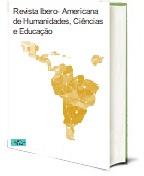INCLUSION MULTIFUNCTIONAL REDISTRIBUTION OF RESOURCE ROOMS
DOI:
https://doi.org/10.51891/rease.v8i6.5992Keywords:
Cognition. To school. LDB.Abstract
The article aims to express the sectorial method of the school question in the country in which school dropout is enormous, that is, special students that at times other than the schedule of the content itself makes it difficult for regulators to see: CPNs National Curricular Parameters LDB 9.394 / 96, Laws of the Basic Directives regulate and determine from an architectural, hierarchical and chronological point of view the annual, semester, bimonthly, monthly, biweekly, weekly and even daily teaching plan, seeking a better performance of teaching in the popular classes Fundamental Education I and II together the capital and cultural heritage. In Opinion CEB 15/98, which establishes the Curricular Guidelines, it is stated that while LDB gives more lasting directions for national education, DCNs are supported by books, technologies and simultaneous acquisitions.
Downloads
Downloads
Published
How to Cite
Issue
Section
Categories
License
Atribuição CC BY

